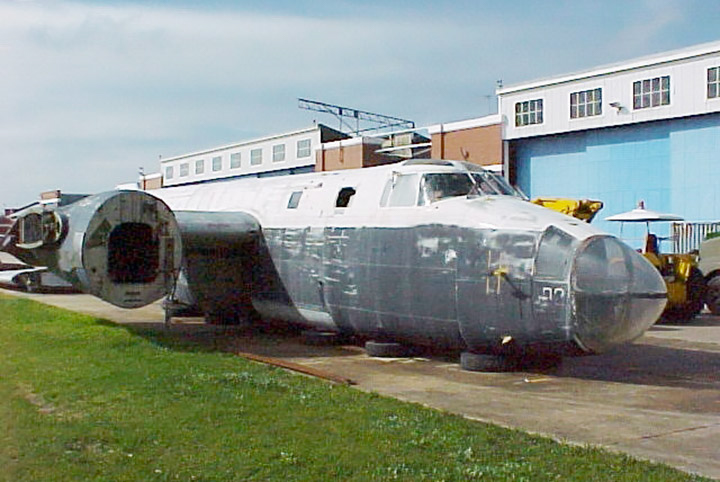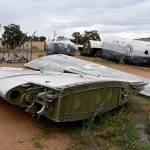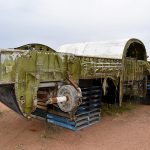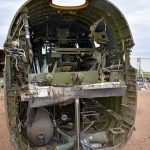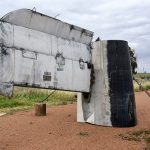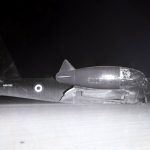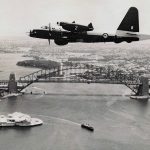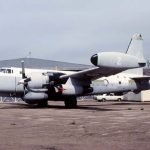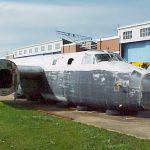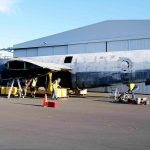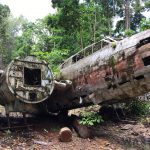Our good friend John Parker at Warbirds Online recently visited the Parkes Aviation Museum in Parkes, New South Wales, Australia. The museum, which is closely affiliated with the Historical Aircraft Restoration Society (better known as HARS), recently took delivery of a former Royal Australian Air Force Lockheed P2V, one of several Neptunes belonging to HARS, and it was this aircraft which was of particular interest to John. This Neptune was originally ordered as a P2V-4 (with U.S.Navy Bu.No.133640), but modified on the production line to more closely approximate a P2V-5. The RAAF initially assigned it the serial number A89-595 in April, 1951, but changed it to A89-302 a year later when they rationalized their numbering system. We thought our readers would enjoy reading his recent story on the aircraft.
This aircraft is extremely historic being the oldest surviving RAAF Neptune and the only surviving early P2V-4/5 aircraft in Australia. It is also one of the oldest Neptunes remaining in the world. The aircraft has survived many near fatal scrapping events and has finally made its way to a permanent home at the growing HARS Parkes Aviation Museum. Over the years, the airframe has been in long term storage at RAAF Wagga, RAAF Laverton and RAAF Point Cook where it was part of the RAAF Museum reserve collection. Recently a decision was made by the RAAF Museum to gift the aircraft to HARS and immediately the effort to recover the aircraft was put into action.
Some have asked why this aircraft has been included in the collection at HARS Parkes given that there is a later SP-2H (149072 – RAAF A89-272) on display at the museum. However, having one of both the types of RAAF Neptunes on display at one site is of undoubted value and as previously stated, A89-302 is arguably the most significant Neptune on display in Australia, so the value is easily demonstrated.
In a typical HARS mammoth recovery effort, a team of volunteers traveled to RAAF Point Cook in November to recover the aircraft from its storage site. After ten days of hard work, and numerous trips to and from Parkes, the aircraft is now safely stored at HARS Parkes storage facility and is awaiting the imminent start for its reassembly and restoration process. Progress is set to be fairly rapid given the previous experience with reassembling SP-2H A89-272, which is now back together and undergoing repaint.
A89-302 is in a poor state cosmetically speaking, given its decades of storage including open storage, and also its use as a spare parts source for other preservation projects. Structurally, however, the aircraft is in better condition than might be imagined. She is eminently restorable, especially given HARS ready access to spare Neptune parts, although HARS would love to hear from anybody willing to donate any internal fitting for the type.
To make the restoration simpler, each major component will be restored at the storage facility and repainted prior to being dispatched to the HARS Parkes Museum where assembly will then take place. This method should save time and volunteer effort.
Lockheed Neptune A89-302 History
Lockheed Neptune A89-302 was one of the first Neptunes delivered to the RAAF. It was in fact constructed in California USA as an early P2V-4, but upgraded before delivery to approximate the P2V-5 variant, although there were still some differences. Disaster nearly befell the aircraft on 12 October 1951 when the starboard main gear would not lower due to a broken chain drive. Her crew was forced to belly-land the aircraft at Muroc Lake, California. However, the factory was able to affect rapid repairs, and delivered the Neptune to the RAAF on November 4th, 1951. At this time the aircraft carried the RAAF Serial A89-595, however it was renumbered to A89-302 in August as part of a simplified RAAF serial scheme.
A89-302 was delivered with three turrets, each armed with twin 20mm cannon. It did not have the two 3,250 pounds-thrust J34 jet engines however, being powered solely by two 3,200 hp R-3350-26WA engines. In a later upgrade, the turrets were removed and jets fitted along with other modifications and updates to enhance the aircraft’s anti-submarine capabilities.
A89-302 served a long and distinguished career in the RAAF with 11Sqn from 1951 until her retirement in 1966. Her role was taken on first by P2V-7s and then the P-3 Orion. Unlike many of her fellow P2V-4/5s she wasn’t scrapped, but rather assigned to the RAAF School of Technical Training at Wagga Wagga NSW in March 1967, for conversion to an instructional airframe and remained there until 1974 when it was noted as being restored for display purposes. The aircraft deteriorated however, and by 1975 was assessed for scrapping. However this did not occur and it remained at Wagga until it was moved to RAAF Laverton in 1997 with some smaller components going to RAAF Point Cook by 2000. The intention had been to restore the aircraft for the RAAF Museum. As the Museum already had SP-2H C/N 149075 – RAAF Ex A89-275 of No. 10 Sqn, it was decided to rationalize the collection and the Neptune was gifted to HARS in June 2018.
Lockheed Neptune A89-302 – The future
The Historical Aircraft Restoration Society (HARS) would welcome any donations to help restore the aircraft and also welcomes new members to assist in restoring the valuable historic Aviation treasures held in the Parkes Museum facility. The restoration of all the Parkes based aircraft covers both internal and external restoration to the highest possible standard. Warbirds Online can attest to the team spirit and camaraderie of the working parties at the Parkes HARS Museum. It is a fantastic opportunity to contribute in a real way to preserving historic aircraft and exhibits and meet new friends and “fellow travellers”.
If you can assist in any way you can contact HARS via their website. They would really like to hear from you!
Many thanks again to John Parker for this article. Be sure to check out Warbirds Online for more of his work.







